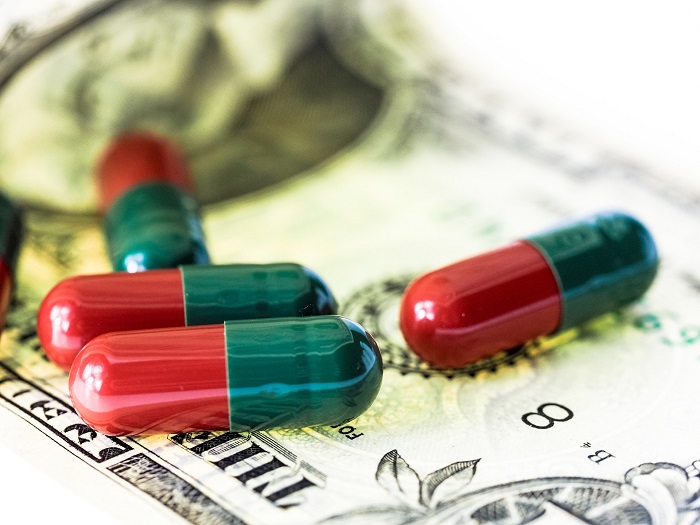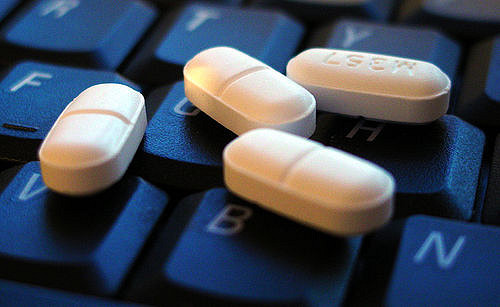by Gabriel Levitt, President, PharmacyChecker.com and Prescription Justice | Apr 22, 2016 | Health Insurance
As much as Americans overall are struggling to afford prescription medication, the problem is even worse in the Hispanic community. First of all, the uninsured rate is much higher among Hispanics and therefore they are more likely to pay the full cash drug price at the pharmacy. Sadly, studies show that Hispanics are even more likely to just not take prescribed medication at all because of cost. While of course most Hispanics living in the U.S. speak English – 38% speak mainly Spanish.
And check this out: there are more Spanish speakers living in the U.S. than in Spain! About 53 million overall, with 11 million of them native English-speakers who are bilingual. So the prescription savings information that is now in Spanish on PharmacyChecker.com could be a great boon to tens of millions of Americans and immigrants living in the U.S.
People who don’t take their prescribed medications can get sick, end up in the hospital or die. No one living in the United States should have to go without medication because of cost and our new Spanish site will potentially help fewer people make that decision.
Tagged with: community, Hispanic, Spanish
by Gabriel Levitt, President, PharmacyChecker.com and Prescription Justice | Apr 15, 2016 | Advocacy, Online Pharmacy Verification Services, Public Health

Kelly Ann Barnes, JD, RPh, Vice President of Pharmacy Verification and Information, PharmacyChecker.com
Last week PharmacyChecker.com announced that we hired Kelly Ann Barnes, JD, RPh, as Vice President for Pharmacy Verification and Information. A licensed U.S. pharmacist for 23 years, before coming to PharmacyChecker.com Kelly was the Director of Pharmacy Quality Assurance for the Massachusetts Board of Pharmacy. She joined us to run the PharmacyChecker Verification Program to verify, monitor and enforce, and further develop online pharmacy standards; check pharmacy licenses; inspect pharmacies in various countries that fill orders internationally; and discipline online pharmacies that are not meeting our standards. Kelly will also be helping answer questions from consumers about pharmacy safety, medication use, and of course prescription drug savings, including more focus on saving money at local pharmacies.
I’m really psyched to be working with Kelly and for those in the medical and public health communities that follow PharmacyChecker.com to get to know her over the coming years. Patient safety is foremost on our minds at PharmacyCheceker.com and our commitment to consumers is fortified by hiring an American pharmacist with a proven track record of dedication to pharmacy quality and patient safety.
Just yesterday, I read in CBS News that drug prices are set to skyrocket by 50% over the next few years – and that patients are often directly hit with higher out of pocket costs. Our pharmaceutical drug bill according to IMS Institute for Healthcare Informatics was $424 billion last year and is going up to $640 billion by 2020.
The CBS article begins as follows: “Americans are getting sick and tired of the rising cost of their prescription medications. Unfortunately, it doesn’t appear likely that consumers will get a break any time soon.” The U.S. is already paying about twice as much on medications compared with other rich and industrialized nations – and it looks like it’s just getting worse. The safest international online pharmacies give consumers the ability to access lower cost medication so they don’t have to skip taking medications, choose between food and medicine, or go broke. With Kelly on board, we’re enhancing our critical efforts to give Americans the best information available about online pharmacy safety and savings and therefore the opportunity to afford medications they need to stay healthy, get better and survive.
Tagged with: Kelly Ann Barnes, patient safety, pharmacy safety
by PharmacyChecker.com | Apr 8, 2016 | Drug Prices
 Earlier this week one of the largest medical organizations in the country, the American College of Physicians, published a position paper on ways to stem the rising cost of prescription medication in the U.S. Some of the recommendations in this article include requiring greater transparency in the cost of developing drugs, taking into account the cost-effectiveness of treatment when evaluating drugs, and allowing government agencies to negotiate volume discounts for prescription drugs.
Earlier this week one of the largest medical organizations in the country, the American College of Physicians, published a position paper on ways to stem the rising cost of prescription medication in the U.S. Some of the recommendations in this article include requiring greater transparency in the cost of developing drugs, taking into account the cost-effectiveness of treatment when evaluating drugs, and allowing government agencies to negotiate volume discounts for prescription drugs.
The ACP report also recommends looking at legislation that would allow the reimportation of some drugs manufactured in the United States. One study it cites claims a 24% savings when using Canadian pharmacies versus local U.S. chain drugstores. According to our research, the savings can often be far greater, sometimes more than 90% when using a verified international online pharmacy!
PharmacyChecker.com would like to applaud the efforts of this physicians’ group in finding new and better ways to lower prescription costs for consumers.
by Tod Cooperman, M.D., CEO, PharmacyChecker.com | Mar 31, 2016 | Cancer Drugs, Drug Prices
There has been a lot of news this week about the outrageously high cost of Xtandi, a drug for advanced prostate cancer. Although developed with funding from the U.S. National Institutes of Health (NIH), Xtandi (enzalutamide) is being sold to Americans at about four times the price at which it is sold in other countries. In January, a petition was sent to have the U.S. government step in and require that Xtandi be priced more fairly for Americans. More recently, several congresspeople and senators, including Bernie Sanders, reiterated this request with their own letter to the Secretary of Health and Human Services and the Director of the NIH.
According to the petition, the Japanese company licensed to sell Xtandi, Astellas Pharma Inc., and its U.S. marketing partner, Medivation Inc. charge an average wholesale price of $88.48 per 40 mg capsule in the U.S. However, in Japan the price is just $26.37, in Australia, it is $23.46, and just across the border in Canada the price is only $20.12.
If you only had to take a few capsules of Xtandi for a short time, this might not be such a big deal. But a standard dose of Xtandi is 4 capsules per day for months at a time. That’s 120 pills per month. So the cost of just a one-month supply of 120 pills at the average wholesale price is $10,617. That’s right, over $10,000 per month! If you must get Xtandi and you don’t have insurance which covers it, what are you to do?
First, if you have no insurance or poor insurance and a household income of $100,000 or less, you can apply to get Xtandi for free through Astellas, which may also offer other financial support.
If that doesn’t work for you, another less expensive option (short of travelling to another country) would be to order Xtandi from a verified international online pharmacy, which will send the medication to you from a licensed pharmacy in another country, such as Canada. Currently, several PharmacyChecker.com-verified online pharmacies sell Xtandi for about $41 per 40 mg capsule – about half the cost in the U.S. If you prefer to get your medication from a U.S. pharmacy, many pharmacies offer or accept discount cards which can bring the cost down a little, but only to about $75 per capsule.
It is ridiculous that American taxpayers helped develop this drug but are charged the most to get it. Hopefully, things will change.
Tagged with: Astellas, Cancer medication, Drug Prices, government, Online Pharmacies, prostate cancer, Xtandi
by Tod Cooperman, M.D., CEO, PharmacyChecker.com | Mar 24, 2016 | Drug Prices
[For a 2019 update on this issue, visit our blog post: NY State Authorizes Paper Prescriptions to Fill in Foreign Pharmacies]
To save money on prescription drugs, it is often necessary to have a prescription in hand to send to an international online pharmacy or shop around at local pharmacies to compare their prices and discounts. However, some U.S. states, like New York, now require that most health professionals write prescriptions electronically, without giving you a paper prescription.
So are you out of luck if you need a paper prescription?
Fortunately, not.
The rules, for example, in New York (where e-prescribing becomes mandatory on March 27, 2016) provide exceptions to allow written prescriptions. One of these is when the prescription is “to be dispensed by a pharmacy located outside the state.” Therefore, in New York, a doctor can still legally hand you a prescription if you intend to have it filled outside of New York. (You can read this for yourself in paragraph (c)(5) of Title 10 NYCRR Section 80.64).
The New York law also says that a doctor who gives you a written prescription is supposed to report the issuance of that prescription to the New York Department of Health within 48 hours. However, the law does not explain how this to be done, so I asked the Department of Health. My question was forwarded to a pharmacist consultant with the department who called me back this morning. He told me that if a written prescription is given to a patient under one of the exceptions, “there is currently no functionality for reporting that to the Department of Health.” Instead, he said “the fact that a written prescription was given should just be noted in the patient’s chart.”
I also asked the pharmacist if a doctor can give a patient a written prescription so they can shop it around to find an affordable price or discount. He said that that is acceptable “if it’s deemed necessary by the doctor.” Again, he said that this should be noted in the patient’s chart.
UPDATE: Shortly after publishing this blog post, the Department of Health updated its FAQ about e-Prescribing, changing its advice on this topic. It has created an email address (erx@health.ny.gov) to which a practitioner should send a message if a written prescription is given (see details in the FAQ in answers to Q139 to Q143). It would seem prudent to also make a note in the patient’s chart for the reason for the written prescription.
E-prescribing is practiced to some degree in all 50 states and 60% of all NY prescribers already e-prescribe. Minnesota has adopted a comprehensive e-prescribing program. But only NY, as of March 27th, will issue fines to prescribers who don’t follow the rules.
The e-prescribing laws were originally enacted to cut down on improper dispensing of controlled substances but are being extended to all prescriptions. The reasons given in New York are “to minimize medication errors” and “the integration of prescription records directly into the patient’s electronic medical record.” In addition, “Electronic prescribing has the potential to reduce prescription theft and forgery.” That’s all well and good, but it is also important that it does not interfere with the overall delivery of good medical care — which includes making sure that patients are able to afford their medicine.
Tagged with: e-prescribing, legal, New York Department of Health
by Gabriel Levitt, President, PharmacyChecker.com and Prescription Justice | Mar 18, 2016 | Drug Prices, Pharmacy Benefit Managers

Each week I try to come up with a new and compelling blog post to discuss issues involving drug prices and problems Americans are having affording medications. I often find myself resoundingly critical of the pharmaceutical industry and this week I was intrigued but curiously put off to be joined by a pharmacy corporation that made over $100 billion last year.
Express Scripts, the nation’s largest pharmacy benefit manager, reported that brand name drugs in the U.S. cost 98.2% (about twice) more on average today than they did in 2011. Last year, brand name drug prices were up 16%. As I read in the Chicago Tribune, Express Scripts used hostile, downright anti-big pharma (and pharmacy) language blaming “opportunistic manufacturers” and “scheming pharmacies.” Rising drug prices of this magnitude are no laughing matter as cash-strapped Americans bear the brunt of these increases, either in higher insurance premiums, co-payments, co-insurance and full cash prices for uninsured (still almost 30 million Americans), or when plans don’t cover certain drugs.
But it is a little funny to hear Express Scripts go after Big Pharma using the rhetoric of greed. After all, PBMs, particularly Express Scripts, are often criticized for their lack of drug pricing transparency and profit-seeking practices, kind of like drug companies and big pharmacies, such as Walgreens and CVS.
While the focus of Express Scripts’ ire is on brand name drug prices, most of the prescription sales it administers and profits from are generics. On that note, buying generic medication without using your insurance’s PBM is often less expensive than your co-payments. But don’t expect Express Scripts to tell you that.
So that Express Scripts doesn’t feel singled out, we’ve reported on the antics of Big Pharmacy before, including Express Scripts’ biggest competitor. PharmacyChecker CEO Tod Cooperman, MD, was on Fox and Friends not so long ago discussing an investigation of CVS Caremark in which the company was accused of price gouging. The allegation: by not informing its customers that the cash price using CVS’ own discount card program would be lower than co-payments using PBMs, such as CVS Caremark or Express Scripts, hundreds of thousands of customers were overcharged.
On that note: the nuts and bolts message is DON’T BE SHY and ask for the lowest possible price at your local pharmacy.
In defense of Express Scripts, and even CVS Caremark, PBMs and large pharmacy corporations do not yield profit margins even close to those of the biggest drug companies. Furthermore, the pharmacy corporate giant, Express Scripts, is right: the blame for ever increasing drug prices falls on opportunistic manufacturers and scheming pharmacies.
Tagged with: Big Pharma, CVS Caremark, Express Scripts, pharmacy benefit manager, Tod Cooperman



 Earlier this week one of the largest medical organizations in the country, the
Earlier this week one of the largest medical organizations in the country, the 

